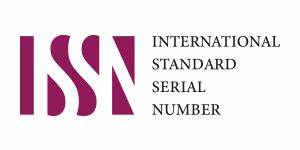THE USE OF JIGSAW COLLABORATIVE LEARNING METHOD IN IMPROVING STUDENT’S READING COMPREHENSION AT MA-ALMUNAUWARAH LOLEOJAYA
Sari
The aim of this research is to improve students' reading comprehension using jigsaw collaborative learning method. This research used a pre-experimental research design. The sample consisted of 24 class XI students at Ma-Almunauwarah Loleojaya. Participants in this research were selected using purposive sampling technique. The instrument used in data collection in the pre-test and posttest is multiple choice. The researcher found that the pre-test data was lower than the posttest. It means that the results are included in the positive category. The research results obtained a sig value 2-tailed=0.001<0.05. Therefore, Ho was rejected and Ha was accepted. It showed that the learning outcomes of class XI students using jigsaw collaborative learning method are higher than those using conventional method at Ma-Almunauwaraha Loleojaya. So that users of the jigsaw collaborative learning method can improve students’ reading comprehension. The use of the jigsaw in collaborative learning model in English subjects implicated to improve student learning achievement. The students are interested in the learning provided and students do not get bored with learning activities so that student learning outcomes can improve well.
Kata Kunci
Teks Lengkap:
PDF (English)Referensi
Aminuddin. (2009). Introduction to Appreciation of Literaly Works. Bandung: Algensindo’s New Light.
Arends, R. (1997). Classroom Instruction and Management, New York: McGraw Hill Compnies.
Arends, R. (2008). Learning to Teach. Seventh edition. Book Two. Jakarta Student Library.
Cohen, et al. (2007). Research methods in education. New York. Routledge. 657
Feng, C. (2006). Training Modules on Integrating ICT Pedagogical Innovation. Paper presented at the Nation Training on Integrating ICT and Teaching and Learning organized by UNESCO Bangkok in collaboration with SOAMOLEC in Jakarta,6010 March 2006.
Ghozali, Imam. (2012). Multivariate Analysis Application with IBM SPSS Program. Yogyakarta Diponegoro University.
Gokhale, (1995). Collaborative Learning Enhances Kritikl Thinking. https://scholar.lib.vt.edu/.
Hamid,M.S, (2013). Metode Edutainment. Jogjakarta: DIVE Press.
Hill. (1993). The collaborative classroom: a guide cooperative learning. Australia. Amadale, Vic: Eleanor Curtain Publisshing. [online]. Tersedia: https://www.pgcps.pg.k12.mdus/~elc/learning1.html [19 Mei 2013].
Isjoni, (2009). Collaborative Learnin Increases Communication Intelligence Between Students. Yogyakarta: Students library
Lado R, (1977). Language Testing. London: Langman Group.
Maman, A. and Rahayu, K. (2012). Statistic Basics. Education. Bandung: CV Library Pilagea.
Nurhadi, (1995). Educational grammar. The Basis For The Preparation Of Language Textbooks. Semarang: IPI.
Panitz,T. (1997). Collaborative Versus Cooperative Learning. Coparing the Two Definition Helps Understand the Nature of Interactive Learning. Cooperative Learning and College Teaching. Vol 8, No, 2. Winter 1997.
Riyawi, R. (2018). The Effect of Applying Collaborative Strategy Reading Toward Students’ Reading Comprehension.
Sawitri, E. (2019). The use of Collaborative Strategic Reading (CSR) to Improving Students’ Reding Comprehension in the second Grade Studentsof SMPN 2 Taraka.
Silberman, M.L. (2002). Active Learning. 101 active learning strategies. Yogyakarta and nuansa.
Sugiyono. (2005) Understand Qualitative Research, Bandung: alfabeta.
Sugiyono. (2016). Quantitative Research Methods, Qualitative and R&D. Bandung PT. Alphabet
Syafie I, (1999) Integrated Reading Teaching. Materials PKG Language core teacher material deepening course. Malang: IKPI.
Tarigan, H., G. (2008). Reading as a language skill. Bandung, Space.
Zagato, (2016). Collaborative strategic Reading for Better Reading Comprehension
DOI: https://doi.org/10.33387/j.cakrawala.v12i2.9857
Refbacks
- Saat ini tidak ada refbacks.
##submission.license.cc.by-nc4.footer##
printed ISSN (p-ISSN): 2089-6115





